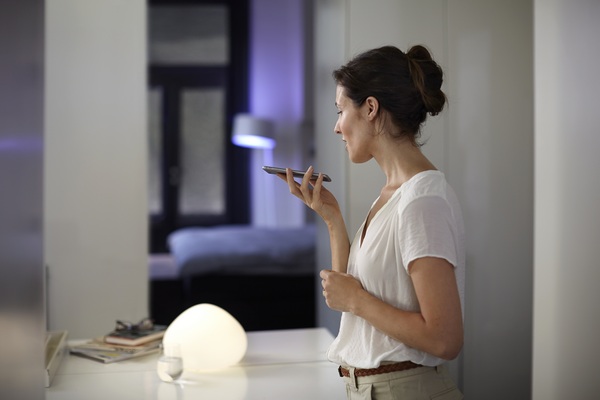A Philips Hue software update last Wednesday banned third-party LED bulbs from pairing up with Hue Bridge created a lot of backlash, according to a Chinese-language ifanr report. A day later the company reversed the decision to embrace third-party bulb support once more.
The Philips Hue statement last week read:
“We recently upgraded the software for Philips Hue to ensure the best seamless connected lighting experience for our customers. This change was made in good faith. However, we under estimated the impact this would have on a small number of customers who use lights from other brands which could not be controlled by the Philips Hue software. In view of the sentiment expressed by our customers, we have decided to reverse the software upgrade so that lights from other brands continue to work as they did before with the Philips Hue system.”
 |
|
The second generation Philips Hue bridge supports Siri voice command, but a recent software upgrade irked users when it blocked third-party smart LED bulbs from pairing with the bridge. (Photo Courtesy of Philips) |
Philips Hue open system can’t quell start-ups innovative passion
For a traditional luminaire manufacturer such as Philips to launch a smart lighting product system, such as Hue requires complimentary R&D software. Apparently, the recent resistance is unrelated to industry monopoly.
So what makes Hue attractive to consumers? One of its features is the Hue bridge, which can connect 50 LED bulbs through Zigbee connection. Once the bulbs are connected to the Internet, the bulbs can be controlled using smartphone App or other methods.
Shortly after Philips Hue launch, developers released supporting Hue bulb softwares, which significantly expanded the bulbs application ecosystem. However, bugs and other compatibility issues quickly surfaced, when pairing third-party LED bulbs, due to disparities between developers R&D capacity. This was also one of the main reasons that Philips started to block third-party LED bulbs from pairing up with Hue bridge.
So why did the company regret the decision?
Philips was concerned about third-party LED bulb quality for a while, and launched “Hue Partnership” project, which encourages bulb manufacturers to guarantee their bulbs will work with Philips Hue Bridge. The smart LED bulbs should operate in plug-and-play mode, and operate once connected to the bridge. Users can check whether the bulb is part of Hue partnership, and test the bulbs to check if there are any issues with the bulb.
Since the Hue Partnership was just starting, and there are a large number of third-party smart LED bulbs on the market, the ban placed on third-party LED bulbs has affected Hue Bridge’s reputation. This is also why the company reverted the decision the following day, which gained support from many foreign media. TechCrunch for instance lauded the decision saying, “this is the right thing to do.”
Philips Hue Bridge to help it lead the smart lighting pack?
“If the lighting in your house isn’t good, than you’d probably feel very uncomfortable,” said smart LED bed lamp Yeelight founder and CEO Eric Chiang during an interview with Korean media iSeed.
His comment points out there is an apparent market demand for smart lighting products, and abundant solutions on the market, plenty of which turn to smartphone apps for control. But for any owner of multiple smart LED bulbs, do you really need to control every bulb individually?
Using Zigbee Philips Hue bridge is able to solve this pain-point, making it one of the most mature smart lighting control centers.
The proportion of smart residential lighting increased, and smart lighting demands have grown considerably. Since a single smart lighting standard is nowhere near on the horizon, a hardware that can integrate different smart LED bulbs is essential for consumers.
At the same time, the technology has been publicized on the market, and is relatively difficult to monopolize. It will be difficult for Philips to become influential in the smart lighting market, by relying on its own products.
Manufacturers should just develop bridge connectors and use these as the entry point, while offering software and other auxiliary products that can be paired with luminaires. This can enrich the company’s product types, while strengthening the importance of its Hue Bridge connectors. Companies can also promote their smart luminaire products as a result, which probably is the main reason behind why Philips was quick to respond to the growing number of complaints, and return to an open system.












